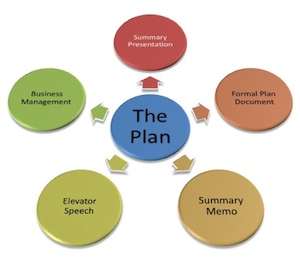 (Note: this is the second of a 10-part series listing my revised top 10 business planning mistakes. The list goes from 10, the least important, to 1, the most important.)
(Note: this is the second of a 10-part series listing my revised top 10 business planning mistakes. The list goes from 10, the least important, to 1, the most important.)
I’m guessing that the idea of doing a pitch – meaning a slide deck driving a presentation, about 20 minutes’ worth maximum – instead of a business plan is popular mainly because of a huge misunderstanding. People mistakenly think of a business plan as a big honking document, difficult to do, unwieldy, and off putting. So they want to do anything they can to avoid it.  Then in walks somebody who ought to know better saying no, you don’t need to do the plan, just do a pitch.
Then in walks somebody who ought to know better saying no, you don’t need to do the plan, just do a pitch.
A pitch without a plan to base it on is like a movie without a screenplay. It makes no sense. The pitch is summarizing the plan.
Whether or not you show a plan document to anybody, whether that somebody sees the pitch and not the plan, the plan is your most recent take on what’s supposed to happen, and both the pitch and the document are outputs of the plan. A pitch slide deck summarizes a plan. It doesn’t stand alone.
In the angel investment group I’m a member of, we read summaries first, then watch the pitches that survived the first cut. But nobody gets serious interest without having a business plan, and a pitch without a plan shows up like a sore thumb. As soon as people start asking questions, the pitch alone doesn’t answer them.
The plan itself isn’t a document, or a slide deck, or a memo; it’s what’s going to happen, and why. It’s a combination of strategy and specific steps to implement strategy. It makes the connections between the different functions and relationships in the business. And usually it lives on a computer.
Those documents, the pitch presentations, and the summary memos, even the elevator speech? Those are all just output of the plan.




Comments